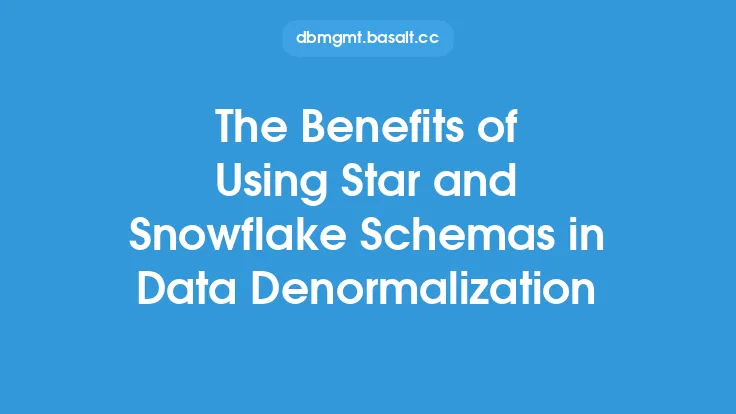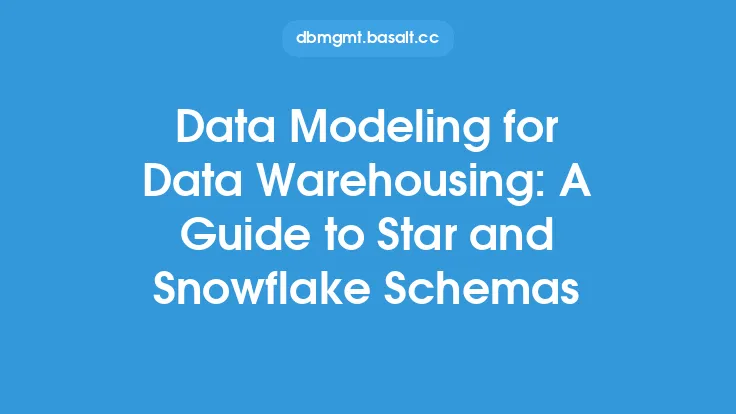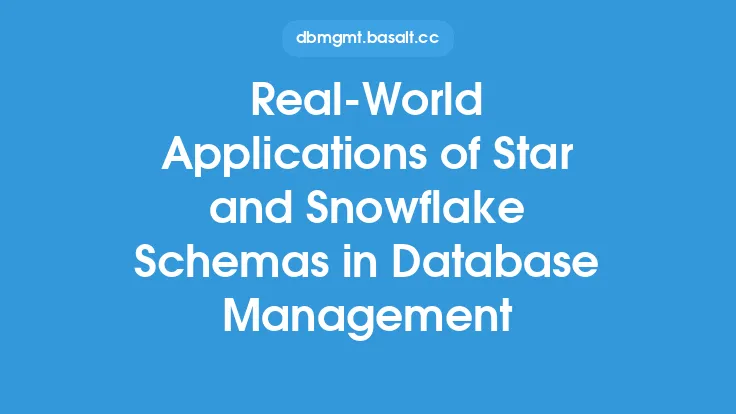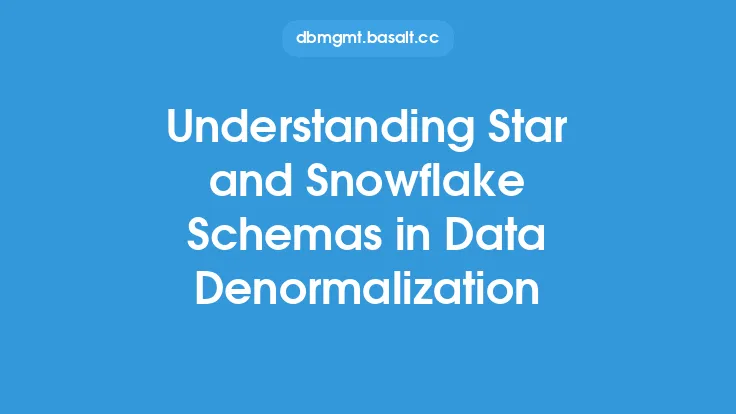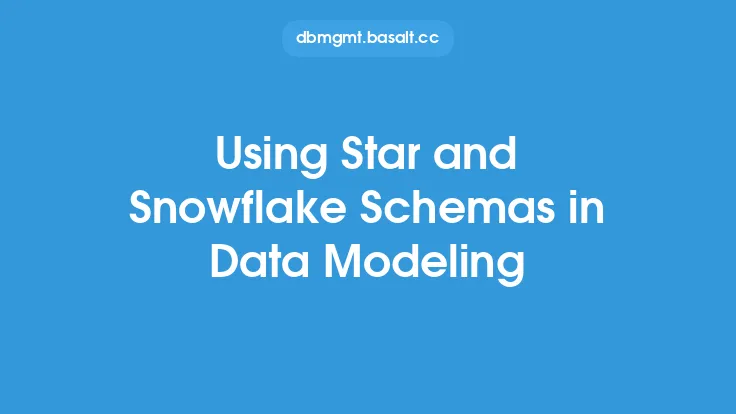In the realm of data denormalization, two prominent schema designs have emerged as cornerstones for optimizing data storage and retrieval: Star and Snowflake Schemas. These architectures are specifically tailored for data warehousing and business intelligence applications, where complex queries and large datasets are the norm. At their core, both Star and Snowflake Schemas aim to reduce the complexity of queries by minimizing the number of joins required to fetch data, thereby enhancing performance. However, they differ significantly in their design approach and application scenarios.
Introduction to Star Schemas
A Star Schema is the simplest form of a denormalized database design, consisting of one central fact table surrounded by multiple dimension tables. Each dimension table is connected to the fact table using a single join, hence the name "star." The fact table contains the primary data for analysis, such as sales amounts or website hits, while the dimension tables hold descriptive data, like dates, locations, or product information. This design is particularly effective for querying and analyzing data because it allows for fast aggregation and filtering of data across different dimensions. For instance, in a sales database, a Star Schema could enable quick retrieval of total sales by region, product category, or time period.
Introduction to Snowflake Schemas
Snowflake Schemas are an extension of the Star Schema design, where each dimension table is further normalized into multiple related tables. This creates a more complex, snowflake-like structure, with the fact table at the center and the dimension tables branching out into sub-dimension tables. The primary advantage of a Snowflake Schema is its ability to reduce data redundancy and improve data integrity by storing detailed information in separate tables. However, this increased normalization comes at the cost of more complex queries, as more joins are required to fetch related data. Despite this, Snowflake Schemas are beneficial when dealing with large, detailed datasets where data consistency and minimal storage are crucial.
Key Components of Star and Snowflake Schemas
Both Star and Snowflake Schemas rely on two fundamental components: fact tables and dimension tables. Fact tables are the central tables in the schema, containing measurable data that can be aggregated, such as sales figures or website traffic. Dimension tables, on the other hand, provide context to the data in the fact tables, offering descriptive information that can be used to filter or group the data. In a Star Schema, dimension tables are directly connected to the fact table, while in a Snowflake Schema, they are further divided into sub-tables, each representing a specific aspect of the dimension.
Design Considerations for Star and Snowflake Schemas
When designing a Star or Snowflake Schema, several factors must be considered to ensure optimal performance and data integrity. First, the grain of the fact table must be carefully defined to ensure that it captures the desired level of detail. The choice between a Star and Snowflake Schema depends on the trade-off between query complexity and data redundancy. Star Schemas are preferable when fast query performance is paramount, and some data redundancy is acceptable. In contrast, Snowflake Schemas are more suitable when data consistency and storage efficiency are critical, even if it means more complex queries. Additionally, the design should consider the data loading process, as both schemas require efficient ETL (Extract, Transform, Load) processes to maintain data freshness and integrity.
Query Performance in Star and Snowflake Schemas
Query performance is a critical aspect of both Star and Snowflake Schemas. In Star Schemas, queries are generally faster because they involve fewer joins, allowing for quicker data retrieval. However, the denormalized nature of Star Schemas can lead to slower data updates and inserts, as changes need to be propagated across multiple tables. Snowflake Schemas, while more complex in terms of queries, can offer better data management capabilities, especially in environments with high data volumes and frequent updates. To mitigate the query performance impact in Snowflake Schemas, techniques such as materialized views, indexing, and query optimization can be employed.
Real-World Applications and Future Directions
Star and Snowflake Schemas have numerous real-world applications, particularly in data warehousing, business intelligence, and big data analytics. They are used in various industries, including retail, finance, and healthcare, to support decision-making processes with data-driven insights. As data volumes continue to grow and analytics become more sophisticated, the importance of efficient data architectures like Star and Snowflake Schemas will only increase. Future directions may include the integration of these schemas with emerging technologies such as cloud computing, artificial intelligence, and the Internet of Things (IoT), further enhancing their capabilities and applications.
Conclusion
In conclusion, Star and Snowflake Schemas represent two powerful architectures in the realm of data denormalization, each with its strengths and weaknesses. By understanding the design principles, advantages, and challenges of these schemas, organizations can make informed decisions about which approach best suits their data warehousing and business intelligence needs. As the landscape of data analytics continues to evolve, the role of Star and Snowflake Schemas will remain pivotal, providing the foundation for fast, efficient, and insightful data analysis.
